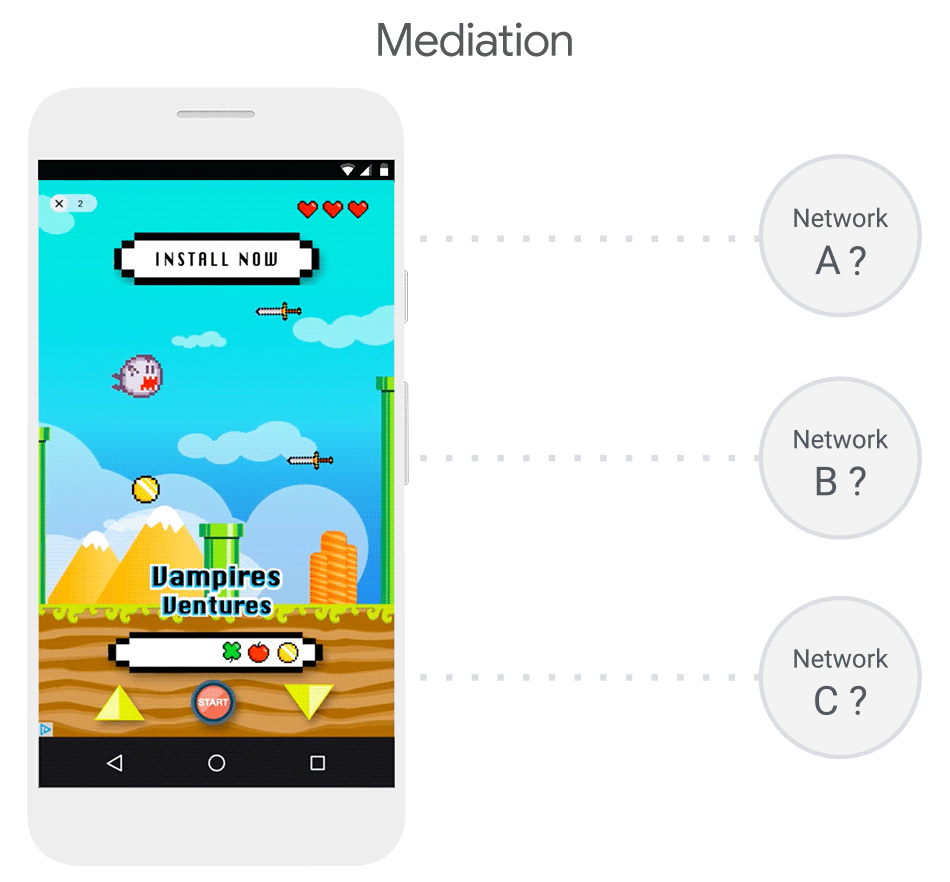I/O is an inspiring moment. Every year, we’re excited to connect with the developer community and hear all of the amazing things you’re building, especially mobile apps.
These apps are the very reason many people consider their phones indispensable. People use these apps to stay connected, be entertained, and get everyday tasks done. Last year alone, people downloaded 94 billion apps from Google Play.
This means more opportunities for developers. With millions of apps in the ecosystem, your ads have to work harder to make your app stand out. And with users being more selective about the apps they keep, you need to create user-first ad experiences to monetize effectively.
In order to build a successful app business, you need tools that help you grow and earn more. That’s where Google can help. This afternoon, you’ll hear about ads innovations designed to help you do just that and examples of developers who are thriving with them. Check out the livestream
here.
Grow your user base
Developers have driven more than 10 billion app installs with AdWords. Today we’re announcing several new innovations to help you find valuable users for your app.
Surface more relevant content in your app promotion ads
70% of users decide whether to install an app based on how much they’ll use it. To provide users more helpful information, we’ll launch a beta that allows developers to surface relevant app content within ads. For example, Wish, a shopping app, can link its product catalog to AdWords and surface relevant in-app product images and descriptions in its ads. This beta will be available in the coming months.
 |
| Surfacing relevant in-app content in ads |
Another way we’re helping developers find new users is by making app discovery easier. For gaming developers, we launched Instant Games in March to enable new players to try your game without having to download it first. Recently, we’ve started early testing to make Instant Games compatible with AdWords. Users can then try out games directly from ads across all the channels that
Universal App campaigns reach.
 |
| Google Play Instant compatible with AdWords |
See a more complete view of your advertising resultsTo give you a more complete picture of how your ads are working, we’re planning on making
view through conversion (VTC) reporting available to AdWords app advertisers later this month. With VTC reporting, you can understand which
viewable ad impressions were associated with conversions. For example, you can use these reports to better understand how well your video and display ads influenced app installs. VTC reporting will consider only impressions that meet the Media Rating Council (MRC) definition of ad viewability.
Earn more from your app
Save time and show value with standardized ad measurementWhen developers sell ad placements in their app, advertisers want to know if their ads are being seen and are working. To date, developers who needed to report viewability data to advertisers have had to integrate multiple SDKs and reconcile disparate methodologies. To address this, we joined an IAB-led working group to simplify and standardize in-app viewability measurement. Today, we’re excited to announce that we’ve integrated
IAB Tech Lab’s Open Measurement SDK into our
Google Mobile Ads (GMA) and
Interactive Media Ads (IMA) SDKs. This solution will save developers time and reflect the true value of their app inventory. Starting today, developers on DoubleClick can request to join this beta.
Optimize your rewarded ads in AdMobWe’re seeing more and more users engaging with rewarded ad experiences. Users opt-in to view ads and in exchange receive in-app incentives or digital goods, such as an extra life in a game or content that she would have had to pay for otherwise. Since launching rewarded ads last year, we’ve seen a 9x increase in impressions, across both free and paid apps.
To help developers make the most of their rewarded ads, we’re introducing rewarded reporting in AdMob. Developers on AdMob will have access to rewarded ad metrics such as opt-in rate, consumption rate and rate of reward use. With these insights, developers can finetune their rewarded ads, addressing questions such as: ‘Do more users opt-in when the ad is shown after Level 1 or Level 4?’ ‘Which type of rewards do users prefer — coins or lives?’ ‘How often do people use their rewarded items?’. Rewarded reporting will be available in AdMob as an open beta coming soon.
 |
| Rewarded reporting in AdMob |
Developers are building apps that connect, entertain and help millions of users. We’re looking forward to helping you grow and earn so you continue sharing the magic of your apps to the rest of the world!
Posted by Sissie Hsiao, VP of Product, Mobile App Advertising
1. Google Play Data, Global, April 2018. 2. Google Ads Data, iOS/Android, Global, March 2018 3. Ipsos & Google, April 2018 4. Google Ads Data, iOS/Android, Global, March 2017 - Feb 2018 







